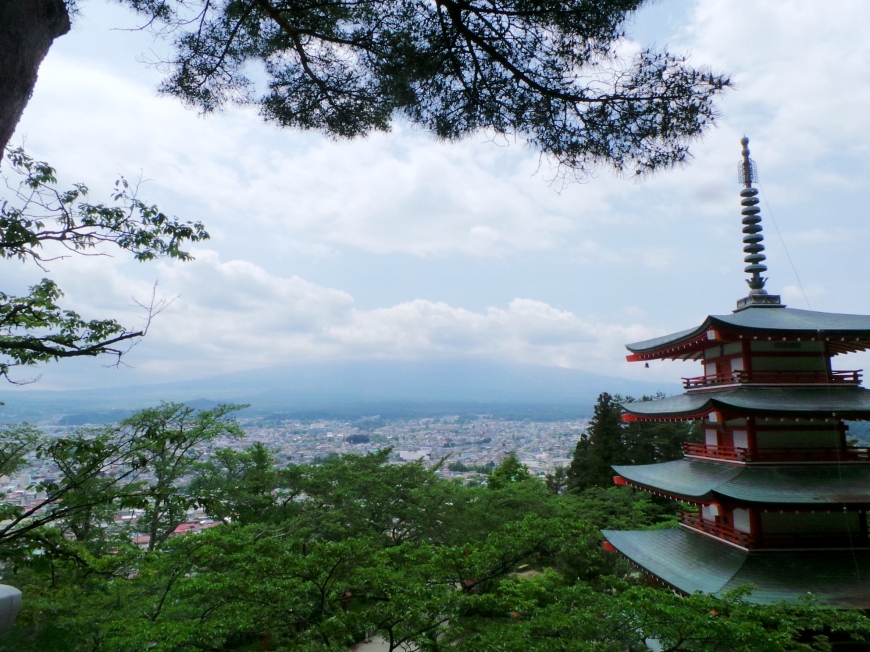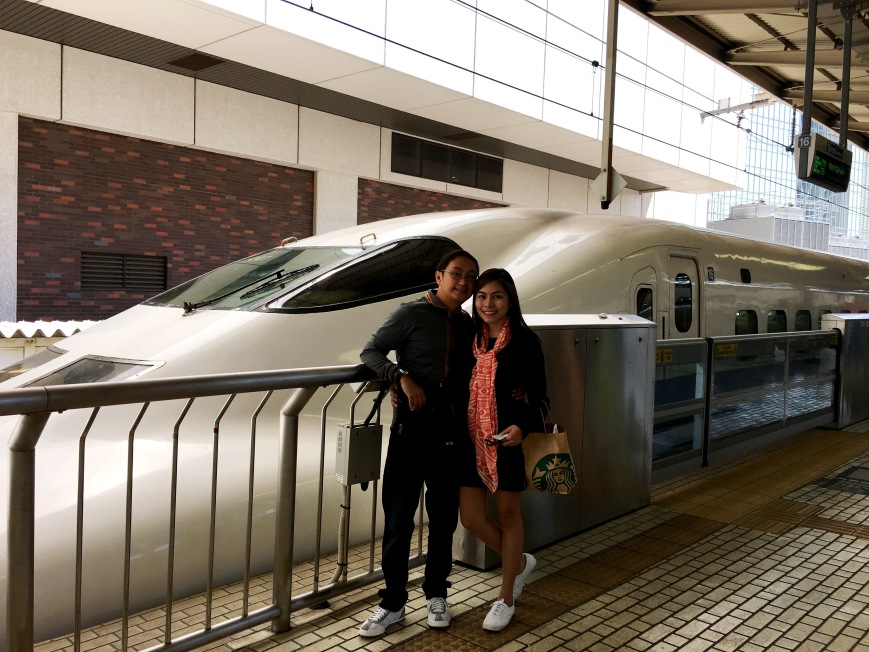Wondering why 16 and not 15 or 20? Well! I just can’t remove #16 on the list! It’s something amazing! Something I always noticed in every Japan blog I’ve read. 🙂
1. Visa
For Filipinos, Visa is a requirement when visiting Japan. Is it hard to get one? No, not really. All you need to do is comply all the requirements and apply through accredited agencies. The Embassy of Japan does not accept any applicants except from their accredited agencies. In Davao, there is only one agency that is accredited and that is Discovery Tour Inc.
2. Flight, Immigration and Customs
From Manila, it takes four hours to arrive in Japan. Per flight itinerary, it seems to be five hours but this is caused by 1 hour time difference. Japan is an hour ahead compared to Philippines.
During the flight, crews will give you two forms to fill-up: Disembarkation Card for Foreigners and Customs Declaration Form. The Disembarkation Card is per person and will be surrendered to the Immigration Officer. Customs declaration form is per group/family and will be given to Customs Officer.

3. Best time to Go
Japan has four seasons: Winter (December to February); Spring (March to May); Summer (June to August) and Fall (September to November). Whatever season it is, Japan is superbly wonderful country to visit. The peak season, however, is Spring were luscious pink cherry blossoms covers the country. Gaaaaaahh! Drooling for some Sakura. Cherry blossoms usually bloom on late March and early April of the year. Sad to say, we came too late for it. But no worries, there will always be next time. 🙂

4. Currency
Japan’s currency is called Japanese Yen. Exchange rate is usually 1JPY=0.43PHP. To make conversion easier, I just divide the price to two. Haha.
Also, I suggest that you exchange your money at the airport or in your home country as banks and money changers are hard to find in Japan. It also has a very traditional society that you cannot just go around with your credit card.
5. Electric Voltage and Wifi Rental
Japan’s plug is same with Philippines so no need for any adaptors; but just to be safe you can buy the universal adaptor.
For wifi, I’ve rarely catch free wifi in Japan or maybe I just don’t know it. Hahaha. So we just rented our pocket wifi at the airport. It costs us JPY 1,000 per day and it requires a security deposit of JPY 40,000 using credit card.
Unfortunately, we lost the device in the taxi and we haven’t traced the taxi company so we have forfeited our deposit! 😦
6. Hotel/Apartment Rental
We stayed at Shinjuku Washington Hotel in Tokyo and Dotonbori Sun Route Plaza in Osaka. For hotel/apartment, I suggest that you plan and book early to ensure room availability. Hotels in Japan are usually fully booked. Also, it is best to book a hotel that is near to a train station so you won’t need to waaaaaaalk for miles.
7. Public Transportation is ALWAYS on time
I suggest that you ride the train when traveling as it is always on time and is very efficient. Renting a car would cost you around JPY 40,000 per car a day as compared to Japan Rail Pass which can offers unlimited access to national railways.

Bullet train from Tokyo to Osaka aka Shinkansen
8. There are English signs everywhere
Japanese speak Nihonggo but don’t worry as most Japanese knows basic English. Getting around as tourist is very easy as you’ll always find English signs everywhere.
9. Tempting Food
Did I say Japan’s food is so tempting that you want to try every food stall you pass? Aaaaaaahhh! Everything is so mouthwatering. From appetizer to noodles to main dish to dessert! Gaaaaaaaaaaah! By the way, slurping is OK in Japan especially when eating ramen as it means you are enjoying their food. And if you love green tea, Japan is the best place for your cravings as green tea is everywhere.
They also have this food machine where you can order. All you need to do is insert a coin and choose from the menu and tada! But unlike vendo machine, the food will not drop at the bottom. A card will be provided and you will give this to the crew and they will give you food. How efficient is that?
10. Do NOT use chopsticks when passing food and do NOT stick them upright
Doing either the two is considered rude as both equals to death. The former is similar to their cremation rite called “kotsuage”, wherein relatives of the deceased are given pairs of huge chopsticks to pick any remaining bones to their loved ones and pass them between family members before placing them in a funeral urn. The latter is similar to offering incense to the deceased. So, please take note of these tips when eating.
11. Do NOT eat when no one is eating
When we visited Asakusa Nakamise, a vendor told us not to roam around while eating as it is considered to be rude. We also saw a poster reminding tourist that it is in their culture not to eat while walking.
12. Tipping is a No-No in Japan
Never leave tips as this is seen as a rude gesture. They give you the right service but they will never expect something in return. You know why? Because they don’t believe that they deserve monetary incentive for doing a good job. Giving a tip to them means bribing them to do better. So, a happy smiling face and a thank you will do. Smile and bow when you say it.:)
13. Clean as you go
We noted that most of the ordered food is in trays. Later we realized that we need to clean the table as we go. Return the utensils and the tray to the food counter; throw leftovers in the designated bin and all recyclables should be put in the recycle bin. WOOOOOW! Just wow! By the way, I rarely see trash can in the streets as these are usually kept in group in an open space. So, just hold on to your garbage until you find one but NEVER LITTER.
14. Keep calm and fall in line.
Manners matter. I’ve noticed that most of the Japanese do not speak loud in public areas especially when riding a train. I think we are the ones talking inside the train; even if we seem like we’re whispering we probably not. Hahaha.
Aside from this, Japanese are so disciplined that they always fall in line. Even in escalators. Oh by the way in Tokyo, you must always keep left. The right side is allotted for people in a hurry. The opposite happens in Osaka. So to be safe, observe the crowd! No blocking and cutting lines please. My boyfriend’s sister-in-law was impressed about Japanese patience as she was on queue then she stopped to tie her shoe lace for couple of minutes. And you know what? The people behind her patiently waited and nobody cut the line! Impressive, right? Simple acts that matter! 🙂
15. Safe and the fact that nothing is ever really lost
I must attest to Japan’s fact that nothing is ever really lost. Why? Because I have left my Go Pro 4 in the airport bus!!! Aaaaaa!!!! Do you know how depressing was that? It’s my first day in Japan and I lost my Go Pro! 😦 How can I take photos?!?! I rushed to the hotel’s reception and asked them to call the airport and notify them that I left something there and tada! After few minutes they called me and informed me that I can get my Go Pro in the Lost and Found Counter at Tokyo City Airport Terminal! Yay! 🙂
The case is different with the pocket wifi we’ve lost as we have not identified the taxi company and we got no identification in the wifi.
16. Lastly but never the least! Never leave Japan without experiencing their Robot Toilet!
I first saw this robot toilet at the airport and quite curious about the many buttons beside the toilet bowl. I never mind it as I am afraid that it may pop or what! Haha. Ignorant may be but when we arrived in our hotel, the same robot toilet is in our room so I finally tried it! Haha. It’s sleek robot toilet with a heated seat, bidet, shower and a musical accompaniment. It must be a must-try experience, I tell you! 🙂
So that is all! Any concerns or queries, feel free to leave a comment below. Thank you!




I can see you also learned to love Japan, Jhanna. Hehe anyways, about the “always keep left”, Osaka area kinda deviates from the rule. They follow the right side instead. Don’t know the reason behind but to be safe, just do what locals do. 🙂
keep posting about JP! 🙂
LikeLike
Yay! Thanks for this bonita! This is well-noted! 🙂 will update my blog.
LikeLike